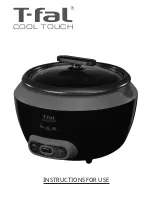
A short passage for the expelled air is
preferable to ensure the tumble dryer
functions as efficiently as possible. Ex-
pelled air is slowed down in the vent
duct by friction against the inner walls
of the duct. The shorter and smoother
the inner walls, the less friction occurs.
Additional duct length
An elbow or bend creates more friction
than a straight duct. An additional duct
length factor should therefore be calcu-
lated for each elbow or bend (see
Table I).
Effective duct length
The additional length factor is added to
the actual duct length to give the effec-
tive duct length.
Duct diameter
A larger duct diameter also helps to re-
duce friction. The duct diameter should
therefore increase with increasing duct
length.
To calculate the effective duct
length:
Measure the actual duct length:
– Establish the number of elbows or
bends necessary, noting the type of
bend, angle and radius involved.
(Table I).
– Add the additional length factor as
specified in Table I to the actual duct
length to give the effective duct
length.
– The appropriate duct diameter can
then be taken from Table II.
Note:
Drying times and energy consumption
remain unaltered for 100 mm diameter
ducting up to a total length of 10 m.
Longer ducting may lead to slight in-
creases in drying times and energy
consumption, but does not impair the
function of the machine if the necess-
ary duct diameter is used (Table II).
Table I
Type of bend
Angle
Radius (mm)
Additional pipe
length (m)
Flexible piping
90°
45°
100 to 500
100 to 500
0.5
0.4
Plain piping
Plastic piping
Stove piping
90°
90°
45°
100
200
100
0.4
0.3
0.3
Elbow
2.5
Concertina bend
90°
200
0.8
Wall vent kit with grille or window vent kit
Wall vent kit with flap or window vent kit
3.8
1.5
Exhaust connection left/right
Flat section adapter (when stacked)
2.0
8.0
Installation - venting
28









































